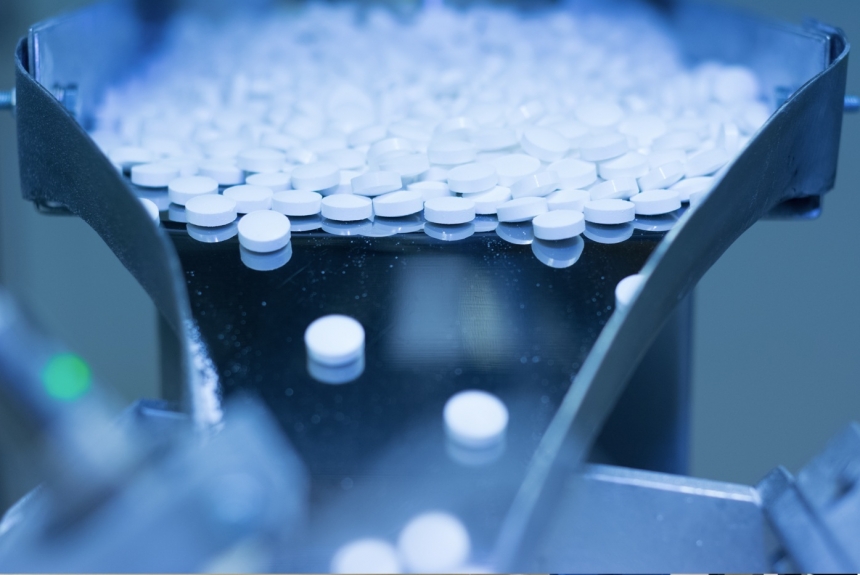Life without medicine would be unimaginable. Medical discoveries throughout history have been responsible for curing then-incurable diseases, even eradicating some. While a world free of disease is unlikely in this generation or the next, every new medicine that enters the market contributes to better health and a longer life.
The role medicine plays in one's life is what makes pharmaceuticals one of the most vital—and lucrative—industries. It's a USD$1.6-trillion market, with the largest pharmaceutical company in the world making close to USD$90 billion last year. Regardless of one's stand on how such companies operate, modern society needs them.
The success of any pharmaceutical may hinge on years of R&D and clinical testing, but a fully equipped production line ensures ample supply. Case in point: the diaphragm pump works behind the scenes to make the following medical wonders possible:
Biopharmaceutical Manufacturing
While a wide variety of medications are made using lab-synthesized materials, others are made from matter derived from living beings. One example is insulin, derived from either the pancreas of compatible animals or genetically modified bacteria (hence, the term).
Handling living matter is more challenging than synthetic ones. For starters, it's no good for the cells in organic matter to die off during the production process. The equipment must be able to set and maintain the ideal conditions from intake to storage. Key to this are:
- Material Compatibility: The advanced materials used to craft the equipment must not induce any adverse effects as the organic matter passes through. At the same time, they have to withstand the rigors of mass-producing medicine.
- Minimal Pulsation: Fluctuations in fluid flow and pressure are inevitable among positive displacement pumps. They're known to reduce the efficacy of the steps involved in medicine production, namely filtration and chromatography.
Properly designed diaphragm pumps take these factors and more into account, reducing operating costs and risk of downtime. Coupled with an advanced control system, facilities can exert control over flow rate, direction, and other operations. In addition, maintaining ideal fluid delivery settings prolongs the pumps' service life.
You can check out resources such as knf.com/en/uk to learn more about how double diaphragm pumps are a big help to pharmaceutical companies. Between their reduced energy consumption and reliable operation amid demanding environments, these pieces of equipment are nothing short of a staple in the biopharmaceutical production line.
Spray Drying

Capsules, tablets, and other powder-based medicines are products of a process known as spray drying. The medicine in liquid form is sprayed via a nozzle into a drying chamber filled with hot gas (usually plain air or nitrogen). Within seconds, the resulting fine powder is then blown into a container, either for packaging or molding into tablets.
The introduction of spray drying is nothing short of a game changer. Experts say one major problem the industry faced in the past was that most excipients (ingredients that enhance the active ingredient's effects) weren't suitable for direct compression. Spraying the liquid in a way that yielded a compressible solid particle shape more or less solved this issue.
However, as far as equipment integrity goes, the process tends to be turbulent at startup. The flexible diaphragms become prone to rupturing, which affects fluid transfer to the drying chamber.
The solution is a diaphragm pump system that keeps the diaphragms in a neutral position every time it's fired up. The addition of precise control lets users regulate flow rate and range of pressure, among other parameters, reducing the risk of premature wear and tear. Hermetic seals protect the fluid from outside contamination.
Medical Cannabis Production
Despite cannabis' precarious situation in modern medicine, it's taken some baby steps toward full recognition. As of this writing, the Food and Drugs Administration (FDA) only recognizes four cannabis-derived medications.
One of which is Epidiolex®, which remains the only FDA-approved cannabis-based drug derived from natural cannabidiol (CBD). This drug is used to manage seizures caused by Lennox-Gastaut and Dravet syndromes, which are rare forms of epilepsy. CBD is found in numerous cannabis strains, though hemp contains more.
Medical cannabis production is no stranger to using diaphragm pumps. Besides material compatibility and minimal pulsation, these versatile pumps can handle cannabis solutions of a broad spectrum of fluid characteristics. They're used in nearly the entire cannabis processing procedure, from solvent recovery to distillation.
On a related note, producing FDA-approved medical cannabis requires the equipment to be similarly certified. As such, it isn't unusual for some types of diaphragm pumps to carry FDA approval and even USP Class VI certification.
Summary
Diaphragm pumps may be one part of the larger pharmaceutical production line, but they aren't any less important than the other components. Their role is to move liquid medicine and a wide range of fluids across each step without ruining its efficacy.
Sponsored Post: This article is a sponsored post.






